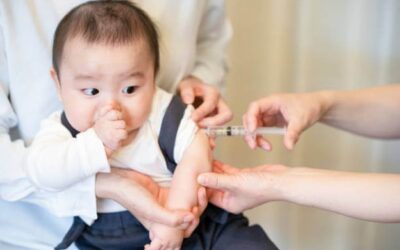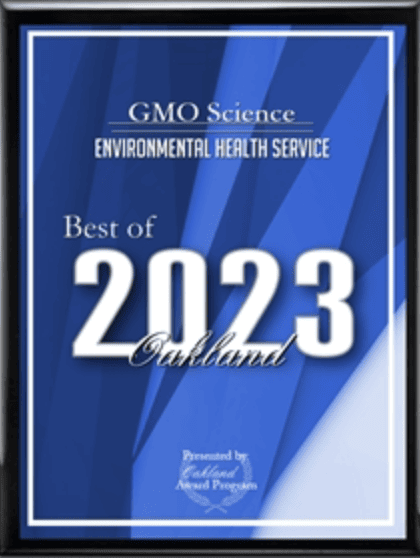At-a-glance
- Exposure to common agricultural pesticides before birth and in the first year of life is associated with an increased risk of autism spectrum disorder (ASD), a study found
- Pesticides found to be linked with an increased risk of autism include glyphosate herbicide, the world’s most commonly used pesticide, which is used on most genetically modified (GM) crops
- The researchers say their findings “support the need to avoid prenatal and infant exposure to pesticides to protect the developing child’s brain”
- Separate research shows that switching to an organic diet reduced children’s exposure to pesticides.
Exposure to common agricultural pesticides before birth and in the first year of life is associated with a small to moderately increased risk of autism spectrum disorder (ASD), compared with infants of women without such exposure, a study published in the BMJ found.1
Pesticides found to be linked with an increased risk of autism include glyphosate herbicide, the world’s most commonly used pesticide, which is used on most genetically modified (GM) crops.
Previous laboratory studies in mice have shown that exposure to pesticides harms brain development and function.2,3 Prenatal exposures to several types of pesticides have been associated with impaired neurodevelopment.4 The few studies that have considered ASD suggested that organophosphates5 and organochlorines6 could increase risk. But knowledge about pesticide exposure in the real world and the risk of ASD is scarce.
So researchers at the University of California used registry records from the California Department of Developmental Services (DDS) to identify 2,961 patients with a diagnosis of ASD – including 445 with ASD with accompanying intellectual disability – and 35,370 healthy (“control”) patients of the same birth year and sex.
Participants were born between 1998 and 2010 in California’s Central Valley, a heavily agricultural region, and 80% of these ASD cases were male (consistent with data showing that the rate of ASD affects boys more than girls – some researchers estimate the ratio as 3:17).
Data from the California state-mandated Pesticide Use Registry were then integrated into a geographic information system tool to assess prenatal (before birth) and infant exposures to 11 commonly used pesticides.
These pesticides were selected because of their high use and evidence indicating toxic effects on brain development.
After adjusting for potentially confounding factors, the researchers found modest increases in ASD risk among offspring exposed to several pesticides (including glyphosate, chlorpyrifos, diazinon, malathion, permethrin, bifenthrin and methyl bromide) before birth and during the first year of life, compared with controls.
Associations were strongest in those with ASD and intellectual disability, which represents the more severe end of the autism spectrum.
This is an observational study. As such it cannot establish cause, and the researchers point to some limitations, such as relying on patient records for details about diagnoses and being unable to examine clinical outcomes.
Nevertheless, they say their study is by far the largest investigating pesticides and autism spectrum disorder to date and their findings back up earlier work in this field.
“Our findings suggest that ASD risk may increase with prenatal and infant exposure to several common ambient pesticides that impacted neurodevelopment in experimental studies,” they write.
The researchers call for further research to explore underlying mechanisms in the development of autism. However, from a public health and preventive medicine perspective, they say their findings “support the need to avoid prenatal and infant exposure to pesticides to protect the developing child’s brain.”
In a linked editorial, Amanda Bakian and James VanDerslice at the University of Utah agree that reducing exposure to pesticides during pregnancy “is sensible public health policy” but state that this “might be close to impossible for some populations.”8
However, while this is true from the point of view of living close to sprayed fields, we know that switching to an organic diet markedly reduced children’s exposure to organophosphate pesticides.9 Michelle Perro, MD, a California-based pediatrician and director of GMOScience, commented, “Programs are being implemented in Northern California to bring organic food into public schools. These programs are showing early initial success in terms of improving behavior and academic performance and are presently under investigation at the University of California, San Francisco.
“Considering these positive results, the recommendation is to switch from conventional school food programs to those offering organic foods. It should also be taken into consideration that some children are eating anywhere from one to three meals a day at school. The decrease in overall pesticide load will be significant in these children.”
References
1. Ehrenstein OS von, Ling C, Cui X, et al. Prenatal and infant exposure to ambient pesticides and autism spectrum disorder in children: population based case-control study. BMJ. 2019;364:l962. doi:10.1136/bmj.l962
2. Lee I, Eriksson P, Fredriksson A, Buratovic S, Viberg H. Developmental neurotoxic effects of two pesticides: Behavior and neuroprotein studies on endosulfan and cypermethrin. Toxicology. 2015;335:1-10. doi:10.1016/j.tox.2015.06.010
3. De Felice A, Greco A, Calamandrei G, Minghetti L. Prenatal exposure to the organophosphate insecticide chlorpyrifos enhances brain oxidative stress and prostaglandin E2 synthesis in a mouse model of idiopathic autism. J Neuroinflammation. 2016;13(1):149. doi:10.1186/s12974-016-0617-4
4. Gunier RB, Bradman A, Harley KG, Kogut K, Eskenazi B. Prenatal residential proximity to agricultural pesticide use and IQ in 7-year-old children. Environ Health Perspect. 2017;125(5):057002. doi:10.1289/EHP504
5. Shelton JF, Geraghty EM, Tancredi DJ, et al. Neurodevelopmental disorders and prenatal residential proximity to agricultural pesticides: the CHARGE study. Environ Health Perspect. 2014;122(10):1103-1109. doi:10.1289/ehp.1307044
6. Lyall K, Croen LA, Sjödin A, et al. Polychlorinated biphenyl and organochlorine pesticide concentrations in maternal mid-pregnancy serum samples: Association with Autism Spectrum Disorder and intellectual disability. Environ Health Perspect. 2017;125(3):474-480. doi:10.1289/EHP277
7. Loomes R, Hull L, Mandy WPL. What is the male-to-female ratio in Autism Spectrum Disorder? A systematic review and meta-analysis. J Am Acad Child Adolesc Psychiatry. 2017;56(6):466-474. doi:10.1016/j.jaac.2017.03.013
8. Bakian AV, VanDerslice JA. Pesticides and autism. BMJ. 2019;364:l1149. doi:10.1136/bmj.l1149
9. Lu Chensheng, Toepel Kathryn, Irish Rene, Fenske Richard A., Barr Dana B., Bravo Roberto. Organic diets significantly lower children’s dietary exposure to organophosphorus pesticides. Environ Health Perspect. 2006;114(2):260-263. doi:10.1289/ehp.8418
Why Study Toxic Metals in Infant Formula? An Overview of the Results
Why Study Toxic Metals in Infant Formula?
An Overview of the Results
May 2024
Michelle Perro, MD
CEO, GMOScience.org
Article 3 in the Got Real Milk Series
The presence of toxic metals in infant formula is a critical issue that demands immediate action.
Public education is crucial to raise awareness among parents and caregivers about the potential risks and safety measures. Regulatory action by Congress is necessary to empower the FDA and other agencies to enforce stringent safety standards. Additionally, formula companies must take corrective actions to ensure their products are safe.
To address this issue, we are initiating a petition to urge Congress to remove any barriers preventing the FDA from enforcing these necessary regulations. In the meantime, parents can consider various supplements that may help offset the toxicity, although this should be done in consultation with healthcare professionals.
By working together—regulators, companies, and consumers—we can ensure that infant formula products are safe and healthy for our most vulnerable population, our babies.
Toxic Metals in Babies’ Formula Overview
Toxic Metals in Babies’ Formula Overview:
An Introduction to our Research
April 2024
Michelle Perro, MD
CEO, GMOScience.org
Article 2 in the Got Real Milk Series
Given the critical importance of ensuring the safety of baby food, the involvement of citizen scientists in testing for toxic metals cannot be overstated. Baby food, a primary nutritional source for infants, must be free from contaminants that could impair their health and development. Recent investigations have revealed concerning levels of toxic metals like arsenic, lead, cadmium, aluminum, and mercury in various baby food products. These findings underscore the need for vigilant monitoring.
Genetic Engineering and Babies
Genetic Engineering and Babies
ONE-AND-DONE
April 2024
Editorial, CEO, Michelle Perro, MD
Photo Credit Children’s Medical Center www.npcmc.com
Small Interfering RNA (siRNA)
As a children’s specialist, I want to caution parents regarding the emerging use of small interfering RNA (siRNA) technology, particularly in therapeutic contexts potentially applicable to infants and young children. This technology, which manipulates RNA to silence specific genes, is still in its infancy and carries significant unknowns. Early research indicates that siRNA can unintentionally impact off-target genes, leading to unpredictable biological outcomes.




